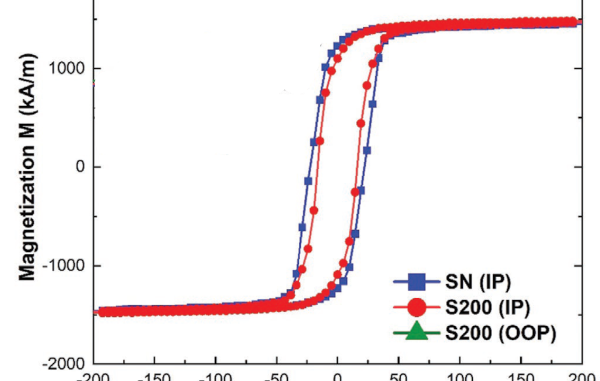
Emanuele Longo, Claudia Wiemer, Raimondo Cecchini, Massimo Longo, Alessio Lamperti, Anton Khanas, Andrei Zenkevich, Matteo Cantoni, Christian Rinaldi, Marco Fanciulli, Roberto Mantovan. Fe/Sb2Te3 Interface Reconstruction through Mild Thermal Annealing. Advanced Materials Intefaces 7, 2000905 (2020). DOI: https://doi.org/10.1002/admi.202000905
The work lead by Roberto Mantovan (CNR‐IMM, Unit of Agrate Brianza, Italy – e-mail) concerns the study of the Fe/Sb2Te3 interfaces in view of spintronic applications. The activity is part of the EU-funded Horizon 2020 FETPROACT-01-2018 project SkyTop (Skyrmion-Topological insulator and Weyl semimetal technology).
Members of the TWEET team performed magnetic characterization measurements of iron through vibrating sample magnetometry (VSM).
Abstract
When coupled with ferromagnetic layers (FM), topological insulators (TI) are expected to boost the charge‐to‐spin conversion efficiency across the FM/TI interface. In this context, a thorough control and optimization of the FM/TI interface quality are requested. Here, the evolution of the chemical, structural, and magnetic properties of the Fe/Sb2Te3 heterostructure is presented as a function of a rapid mild thermal annealing conducted on the Sb2Te3‐TI (up to 200 °C). While the bilayer is not subjected to any thermal treatment upon Fe deposition, the annealing of Sb2Te3 markedly improves its crystalline quality, leading to an increase in the fraction of ferromagnetic Fe atoms at the buried Fe/Sb2Te3 interface and a slight lowering of the magnetic coercivity of the Fe layer. The method is an efficient tool to clean up the Fe/Sb2Te3 interface, which may be extended to different FM/TI heterostructures. Simultaneously to the interface reconstruction, a constant ≈20% fraction of FeTe develops at the interface. Since FeTe can display superconductivity, the Fe/Sb2Te3 system could have potentialities for exploiting phenomena at the edge of magnetism, superconductivity and topology.

Leave a Reply